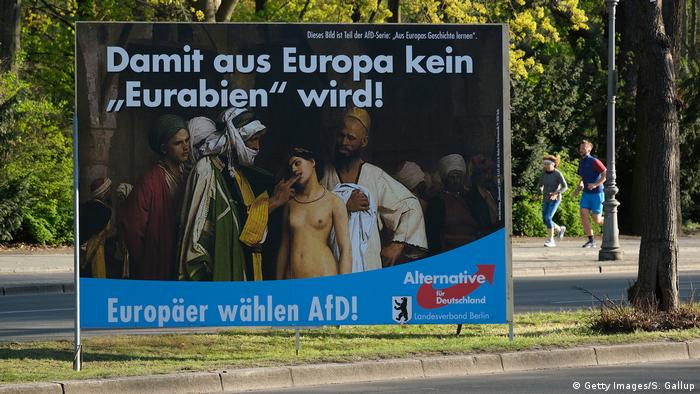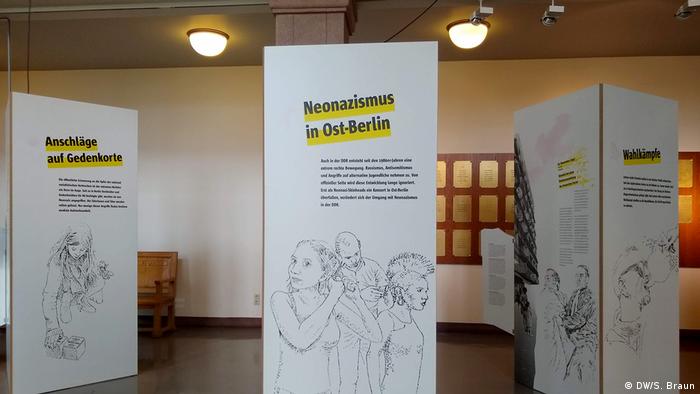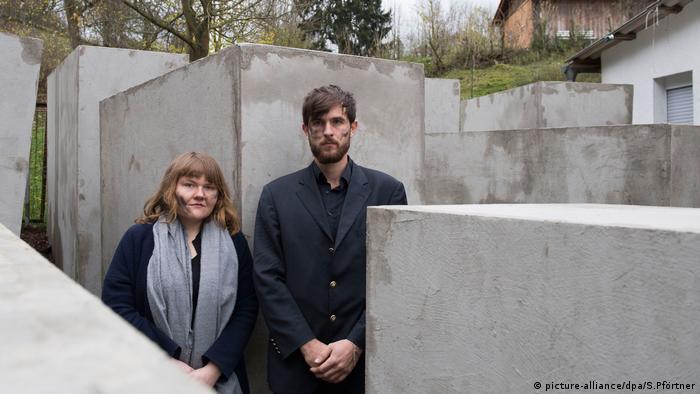In the European elections, the AfD history of art, stretched in front of their carts. The party is committed to a new “high culture” -strategy. Observers warn of Islamophobia and racism in the culturally refined sheep’s clothing.

When I went on the day before the European elections in my Berlin neighborhood shopping, I got to meet a large lorry with German flags and AfD-Logos, as well as a large reproduction of an oil Painting. It showed a white, enslaved woman, the vulnerable, the Look and the handles of several dark-skinned and scary men look is exposed. The Slogan: “Europe is not Eurabia! Europeans choose AfD!”
“Eurabia” is an Islamophobic term that is used in connection with a conspiracy theory which says that Europe will soon be taken over by Muslims – a theory that was advanced by the Norwegian right-wing extremist Anders Breivik, which killed in 2011, 77 people.
Targeted rear handles on the cultural Gedächntnis
The poster – one of several from the AfD campaign “From the history of Europe to learn”, for which the party has several famous art reinterpreted works in the EU elections, to promote a xenophobic Agenda – shows “The slave market” (1866) by the French painter Jean-Léon Gérôme. This is an orientalist, a racist icon from the colonial period.
Also, the painting was used to remind the voters about what happened in Cologne, Germany during the new year’s eve 2015, as more than 600 women were victims of sexual Assault, the majority of men with “North African” appearance to have been committed.
Again and again
The owner of the painting requested that the right-wing populist party, the posters hang out – without success. At the same time, AfD officials have tried in the recent past, exhibitions of various institutions interact, by certain works should not be shown. The exhibition was, for example, “again and again? Extreme rights and resistance in Berlin since 1945,” in Berlin’s Rathaus Neukölln under pressure: The organizers, the request of the AfD, should a party remove related content in the European election.

Exhibition “again and again? Extreme rights and resistance in Berlin since 1945”
“We want to make with the exhibition on the continuity of the extreme Right in Berlin closely, and at the same time on the facets of social resistance point,” explains Vera Henssler from the “anti-fascist press archive and education centre” in the DW-interview. “The AfD is only a small part in this story, but it is undoubtedly one of the actors.”
The AfD-related exhibition content to show how party members joined at the height of the so-called “refugee crisis” 2014/15 for anti-Islamic protests neo-Nazis. Or how the right-wing tendencies within the AfD have strengthened over time, and the party of an originally EU-critical party was a Central platform of Islamophobia.
After the European elections, the AfD-posters migrated in the exhibition at the neukölln town hall – to the displeasure of the party fall. The at announced to the objects by a court order from the Display remove. “We will not tolerate something in a public space with public funds,” the spokesman for the Berlin AfD, Ronald glasses, compared to the DW.

The choice of the Republicans, the NPD and the AfD badge
Freedom Of Expression?
The attempted intervention in the exhibition at the neukölln town hall by the AfD is not an isolated case – even the work of other cultural and educational institutions want to censor the party already. So she sued the science center Berlin for social research (WZB) for its study on “Parliamentary practice of the AfD in the German state parliaments”, with the justification of personality rights hurt to have. In April, the Berlin district court dismissed the action: The study violates in any way the personal rights of the AfD in the Thuringian state Parliament and could be based on the science and the freedom of expression.
The expression itself is for the AfD is a political issue. “The restoration of the freedom of expression is one of the main concerns of the AfD”, asserts Ronald glasses.
However, one wonders how this fits together with another prominent case, in which the Chairman of the Thuringian AfD group, Björn Höcke, start: 2017 the “center for Political beauty” (ZPS) built on the neighbouring plot of land, a scaled-down replica of the Berlin Holocaust memorial, because Höcke referred to the memorial as a “monument of shame” and a “reminder of a political 180-degree turn” was needed. In a speech in front of the extreme Right, including Lutz Bachmann, founder of PEGIDA (Patriotic Europeans against the Islamisation of the Occident), called Höcke, the group finally “a criminal, Yes a terrorist organization.”
A 16 -month investigation against the founder of the ZPS followed, and was only set up recently, after it emerged that the competent state attorney to the AfD close, and the party have donated to.

Jenni Moli and Morius Ends (from the left) from the centre for Political beauty and the “monument of shame”
Right-wing March through the cultural institutions ?
Kai Arzheimer, Professor of policy at the Institute for political science in Mainz, is of the view that efforts to influence cultural institutions, were part of a “worrying” trend that hit the heart of the freedom of expression.
“This also fits in to the program for the election in Saxony, the AfD cuts in funding for organisations, with the world image of the party to be incompatible,” says Arzheimer.
Cynthia Miller-Idriss, Professor of education and sociology at the American University in Washington, D.C., explains that the modern rights have in fact begun to devote to cultural and educational institutions, a lot of attention.
New High-Cultural Strategy
In her book, “The Extreme Gone Mainstream: Commercialization and Far-Right Youth Culture in Germany” (The Extremes are Mainstream: commercialization and the extreme right-wing youth culture in Germany to 2018) it is concerned with the increasing Overlap of mass fashion and music culture with an increasingly socially integrated extreme right-wing scene, which is no longer characterized by shaved heads and bomber jackets, and be aware of neo-Nazi associations keeps.
“The strategy is not new,” says Julian Göpffarth, a researcher at the European Institute of the London School of Economics and Political Science. Already since the 1970s, the new right in Germany to seek “cultural hegemony”. But “with the advent of the AfD far-Right extremists are now in positions of power where they can implement this strategy in an unprecedented way.”
The AfD confirmed, to pursue a new strategy of high culture. “The use of historical images for a campaign was something New,” explains Ronald glasses the campaign of the AfD “Learn from the history of Europe”. Asked why the “slave market” was used, he added: “Because the picture clearly shows, where the multi-cultural society may lead”.
Precious-Islamophobia?
Göpffarth this is called a Form of “intellectual racism” that “sets an elite understanding of the European civilization as superior to, that was in the colonialism of the Norm”, and many of the AfD supporters arrives. “The use of this image allows the AfD to connect the old extreme-right Topoi with a new, more educated, bourgeois audience, the rejects Islam,” he added.
Cynthia Miller-Idriss believes that views on the Superiority of the European civilization, as taught in the art, are also to be found in the American-Alt Right movement. Both, she says, was shared by “an anti-Islamic and against immigrants, directed, fear-driven Agenda and the pursuit of recognition as an educated, culture-savvy citizens, which differed from the vulgar racist Skinheads.”
The art scene responds
But the Islamophobic Narrative of the AfD has led to an ongoing backlash: “you use art in a political sense, but are opposed to political art,” says Raul Walch of “The Many”, a Germany-wide artist collective, which contributed in may 2018, and to bring tens of thousands of people on the streets of Berlin to an AfD rally counter.
“Freedom of speech and freedom of artistic expression are very closely linked,” he told DW, a week after a different artist-led protest against the Right-wing, the approximately 28,000 people in the whole of Germany gathered. The struggle for cultural hegemony, it seems, has only just begun